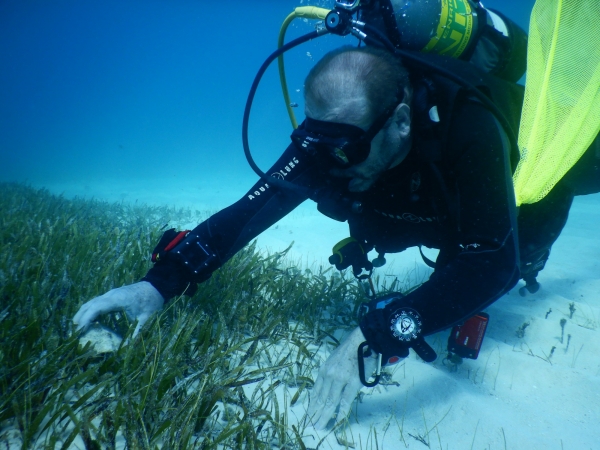In the summer of 2020, Florida Museum researchers Tobias Grun and Michał Kowalewski dove into the shallow waters off the coast of the Florida Keys and scoured the ocean floor for sea urchins. Telltale tracks and dimples in the sediment alerted them to the presence of sand dollars, sea biscuits and heart urchins concealed just beneath the surface.
Between August and April of the following year, Grun and Kowalewski visited 27 sites along a 20-mile stretch of coast near Long Key. By the time they finished, their sea urchin survey was among the most extensive conducted in the region for the last several decades, and their results offer a bit of good news.
The researchers published an analysis of their survey last week in the journal PeerJ, which shows the number and diversity of sand dollars, sea biscuits and heart urchins appears to have remained relatively stable since researchers began keeping tabs on their populations in the 1960s.
“It was a pleasant surprise to find that they’re still widespread and abundant,” said study co-author Kowalewski, the Florida Museum Thompson Chair of Invertebrate Paleontology. “The Florida Keys are heavily impacted by human activity, with fishing, tourism and diving all occurring on a massive scale. On top of that, coastal ecosystems are subject to climate change, increasingly strong hurricanes and escalating stressors resulting from continuous urban development.”
Read more at Florida Museum of Natural History
Image: Grun and Kowalewski sampled in a variety of shallow water environments, including seagrass meadows and sandy sea floors on both sides of the nearby barrier reef. (PHOTO BY TOBIAS GRUN)


